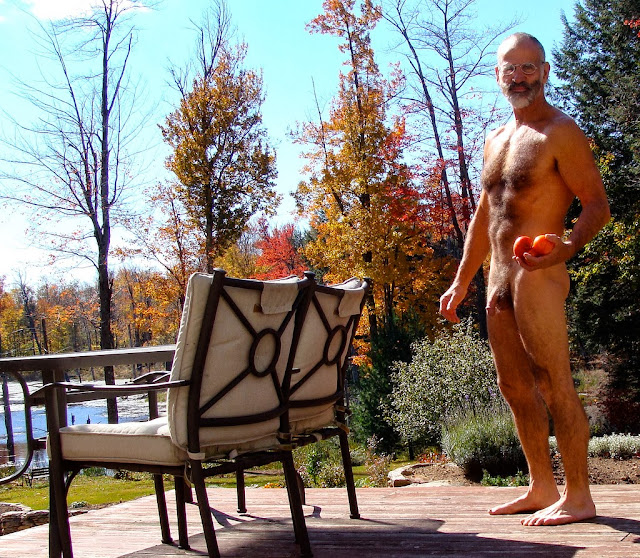Most of the time, enough rain falls in the autumn to benefit shrubs and perennials so their roots will spend winter without stress. But if your fall is a bit shy on rainfall, it wouldn't hurt to water your plants a bit. Your plants will thank you in the spring with generous blooms and leaves.
TIP: Don't overdo pruning in autumn. For most shrubs and trees, autumn pruning is harmful. Shrubs and trees are getting ready for cold months. Pruning stimulates leaf growth at a time when the plants should be slowing down. In most cases, it's better to prune during the coldest months of the year. January is when I do most of my pruning. One advantage is that it's easier then to visualize the form of the tree so can see what needs pruning and what should be left alone. One exception of the winter-pruning rule is spring-flowering shrubs, such as rhododendron or azalea. Wait until after they bloom in late spring before you prune.
I've never planted potatoes, not because I dislike hard work but rather because I lack space in my garden. But I do get potato-planting envy whenever I find a tiny sprout in an older potato in my pantry.
Be gentle with those apples! You'll bruise them by throwing them in the wheelbarrow. If you can't eat all of them, why not collect them gently and donate them to your local food bank or shelter for the homeless. Even if the apples are imperfect, they may be useful for pies or sauce. You'll feel good knowing that a homeless woman or child is enjoying food you grew.
Don't get me started on lawns, especially those that are doused with chemicals to kill weeds and grubs. They harm beneficial insects, such as butterflies and bees, and turn your yard into a sterile place. I think the best lawns are those that are kept to a minimum in size, treated naturally (with a delicate raking of compost, for instance), and allowed to have a bit of dandelions or clover. My "lawn" consists of just enough imperfect grass for sunbathing turf and for pathways to my flowers and shrubs.
TIP: There are many ways to get rid of your fallen leaves naturally. Create a compost pile in your yard. Or find a friend who will let you dump them in his or her woods. Or place them on an area that you'd like to create for a garden in the future (That's an easy solution to kill turf and weeds while enriching the soil. I've done it in the past, and it works.). My city has a leaf-pick up program; the city shreds the leaves and gives them free to city residents in the form of compost or mulch the next year. But whatever you do, don't bag the leaves and set them out for the trash. Many towns lack space in their landfills, and putting leaves in them does no one any good. Having to create a new or enlarged a landfill is expensive, and the cost eventually will come back to you through higher taxes or higher hauling fees.
But before winter's icy clutches grabs you by the balls, won't you take a moment to enjoy autumn's fleeting color?
























0 comments:
Post a Comment